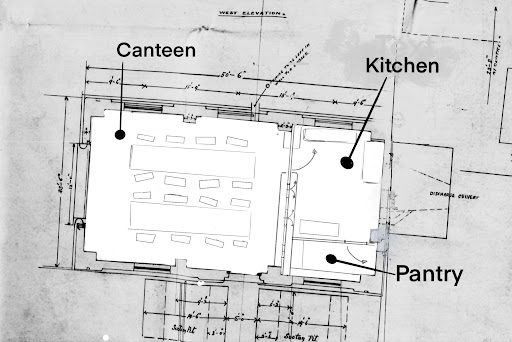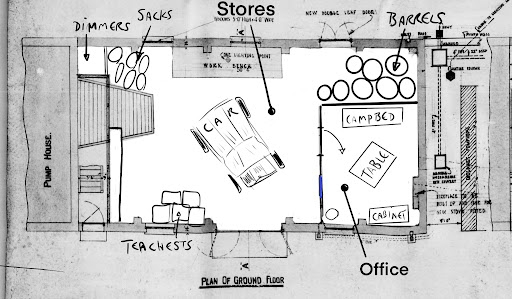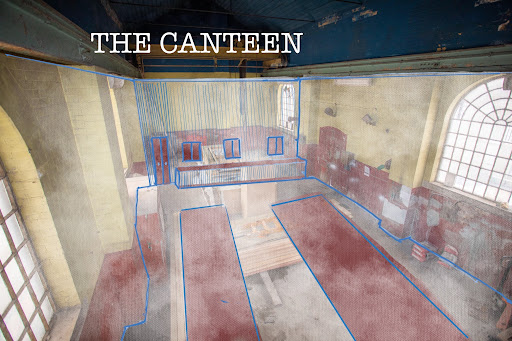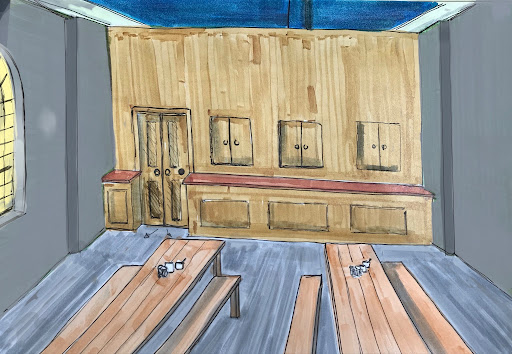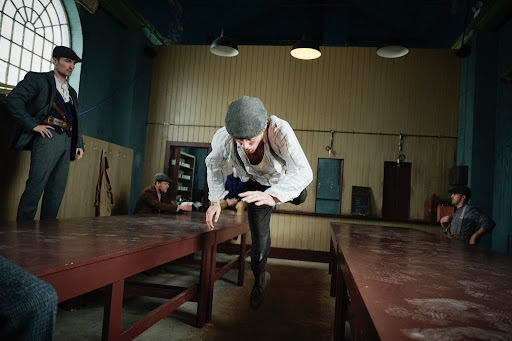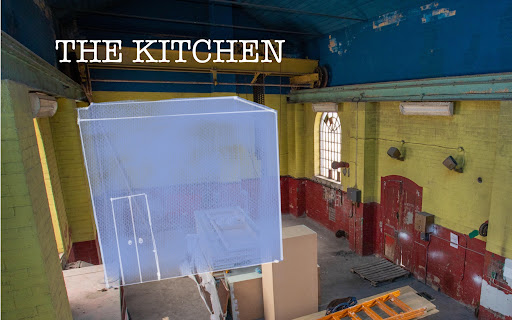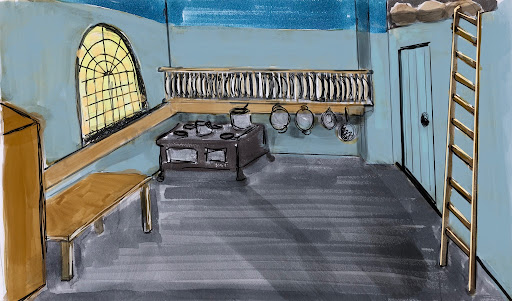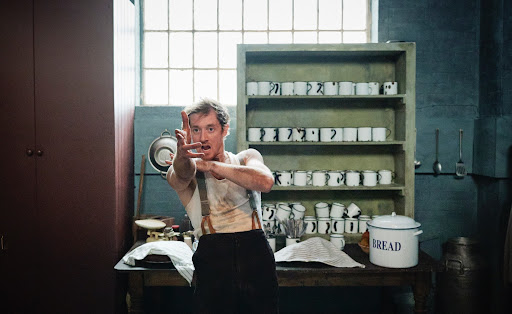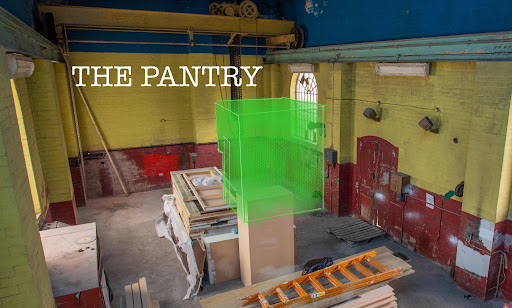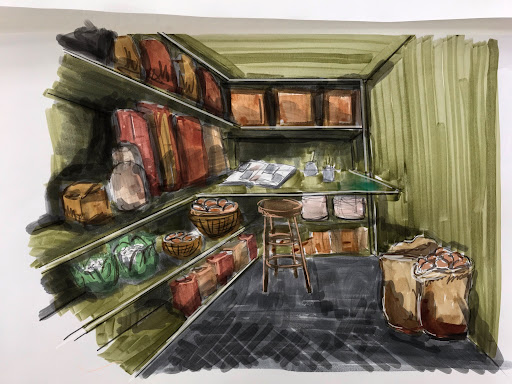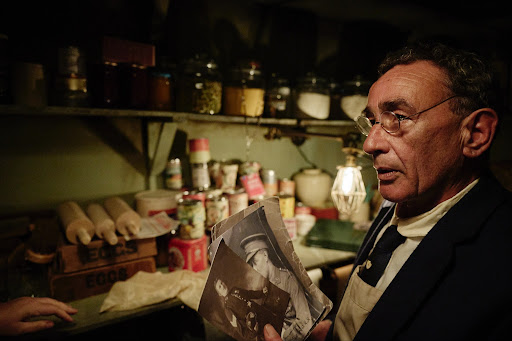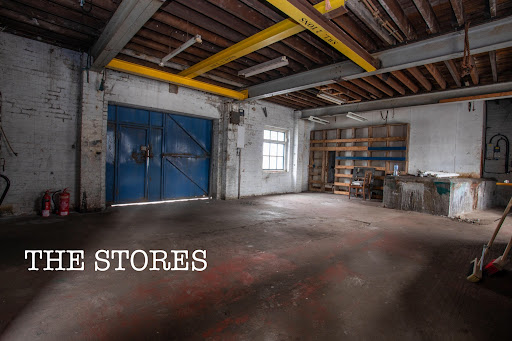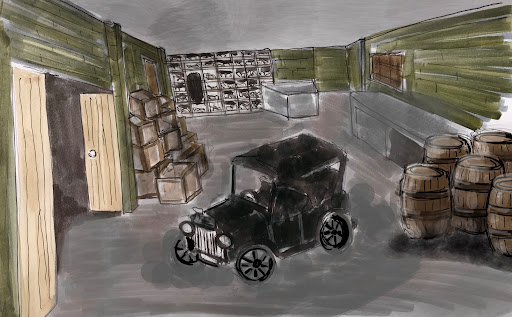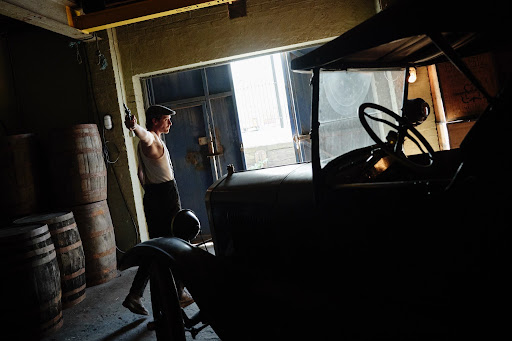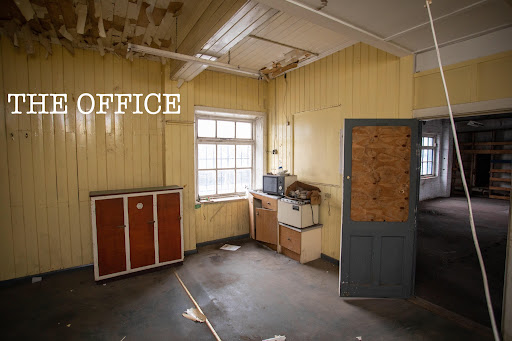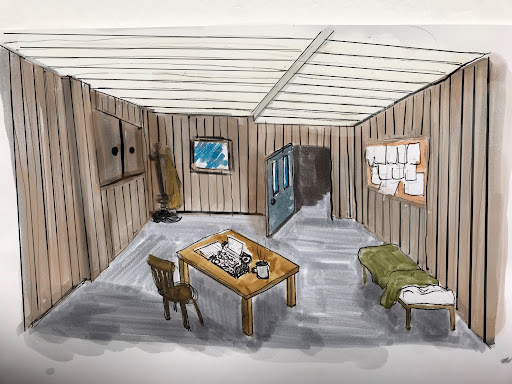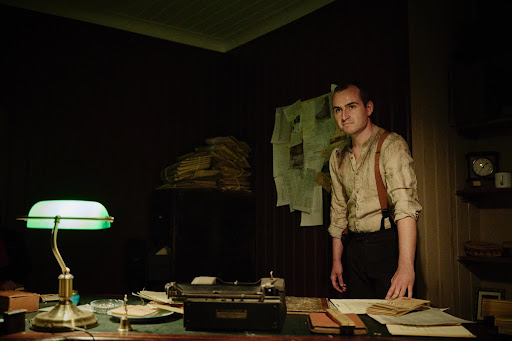DESIGNER’S NOTE
By Owen Boss | Designer
The making of our book:
The Pumphouse, a Victorian brick monolith sitting within the Dublin Port landscape appeared outwardly simplistic. It’s basic exterior belied a deceptive interior. Inside we would find three rooms of vastly varying scale, size and function that hadn’t been touched in decades, each creating a challenge for the design of our production. New rooms needed to be constructed to create five individual distinct spaces that would support the characters, narrative and history of the time and events of Q Comapny at the Port. Each space needed its own identity and individual personality whilst also linking coherently as a whole to support the physical journey the audience would undertake. The five rooms created were the canteen, the kitchen, the pantry, the stores and the office. Each constructed with forensic detail through thorough research utilising Dublin Port’s historic experts and archive and the advice of Brenda MAlone of The National Museum of Ireland.
Within our work it is really important that all details of the design are accurate and convincing to enable a deep immersion into the world of the production. Our audience are so close to everything within that world that those objects, furniture and spaces have to ring true. To this end we had an exact replica of the IRA intelligence dossier made by master prop maker Judith Hynes and the three flags that hang from the canteen ceiling are replicas on loan from the National Museum of Ireland.
The journey we constructed traverses from the high-vaulted spacious canteen into the smaller kitchen space, then into the cluttered claustrophobic dark space of the pantry and back out again into the darkness of the stores and the quiet of the office (or a combination of those). Tables are danced on, double lives are glimpsed through hatches and people emerge from the darkness. Low hanging lights create pools of illumination as people and objects seem to emerge from the darkness like a Rembrandt painting. The surrounding shadows are used to create a claustraphobic, high-stakes, paranoid space where anyone can emerge from the darkness and very often do. The building provided the potential of a highly charged space that made possible the summoning of the memories of these very real people and stories.
